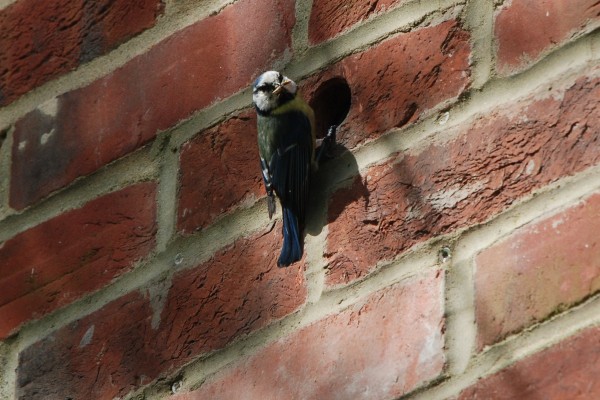A bit of light relief this week. And a good news story. A rarity for both this blog and any report about the state of nature. This one is lovely. You will sing hallelujah and punch the air with delight when you hear it.
A small building firm has designed a simple and stylish way to provide bird boxes built directly into a building, not just nailed precariously onto the outside.
The actual box where the birds will nest is made from recycled plastic. The cover is four bricks, one with an entry hole in it, sliced thinly to about 2cm thick which are already in the classic brickwork formation. The whole construction can then be slotted into a wall and unobtrusively mortared up together with the normal surrounding bricks. There is even a nifty way of removing the front to clean the inside, or put a camera in.
The holes come in different sizes for small birds or larger for starlings or swifts. There is even variations for bats and insects. Not only that, the bricks can be matched to the type used in the building, or a mesh fronted one can be rendered flat.
It seems to me, as someone who doesn't build houses, that this is a fantastic invention. What is there to fault about it? An architect can use them without messing up his design, the builder isn't put out with difficult insertion, and everyone gets to feel good about providing much needed habitat for birds and bats.
There is one question mark over the use of plastic for the box. A young designer has come up with another solution whereby the cavity for the bird is within the whole brick. The idea is the material has thermal qualities that will keep the eggs (and nesting mum) warm at night and cool during the day.
There is a call for legislation to be made that all new builds must have two or three (of either design) bird boxes built into them.
As we know populations of common birds have been declining. The House Sparrow population by 71% since 1977, and starlings by 66%. (Sorry to bring the tone down) There are many reasons for this. Habitat loss is one cause. When you normally think of 'habitat' you imagine the countryside, but it is not necessarily large scale industrial farming, or even new building developments covering over the countryside that are at the root of the problem. It is habitat in the form of lack of suitable nesting sites.
Both sparrows and starlings nest in the houses surrounding Garden65. A little colony of sparrows use holes in the brickwork of the end wall of a semi-detached house. Starlings nest under the eaves of my neighbour's house. I do fear for them. Their existence is precarious. The semi-detached house is owned by an old couple. When that house gets sold on I imagine it is quite likely that the new neighbours will improve the condition of their new house by sorting out the roofing spaces and filling up holes in the brickwork. As for the starlings, we have put in new plastic soffits and fascia boards in our roof. I would have liked to use wood and include holes for birds, but this comes at a price we couldn't afford. I feel dreadful about the bumble bee nest we lost. My neighbours moved in last year. They've built the extension, and are about to have the garden redesigned. The roof can't be far behind.
The British Trust for Ornithology did some research on declining House Sparrow numbers in urban areas. They found sparrows need holes in buildings.
A pattern that appears in some city populations is that House Sparrows are most abundant and population declines are lower in socially deprived areas. This could be due to several factors, including more waste ground and gardens that have less management (e.g. pesticide inputs), leading to greater food availability, and fewer home improvements leading to a greater availability of nest sites.
House Sparrows were more likely to occur at sites where there were gaps in the roof tiles. Modern tile designs do not have these gaps and House Sparrow nest sites may be lost where re-roofing takes place. Just over 25% of respondents reported that they had had such gaps blocked, many within the last ten years, and 7% within the last year. The addition of loft insulation (90% of lofts were known to be insulated) may also influence House Sparrows.
So this then is the perfect excuse for you not to upgrade your house. Sparrows need dereliction.
Or if you really must, get a bird brick house or two.
Bird Brick Houses from Lizzie Tilley on Vimeo.
Bird Brick Houses
Bird Nesting Brick


